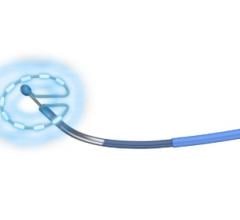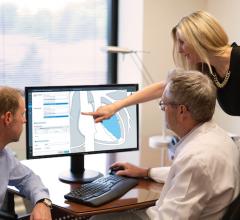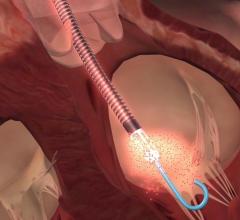January 31, 2020 – The U.S. Food and Drug Administration (FDA) has given Medtronic approval to proceed with an ...
January 29, 2020 – Nuance Communications Inc. introduced Nuance Cardiovascular CAPD, a new computer-assisted physician ...
January 31, 2020 – The Society for Vascular Surgery (SVS) and Society of Thoracic Surgeons (STS) released new reporting ...
Providing exceptional cardiovascular care for patients to achieve the best possible outcomes is the number one goal for ...

January 30, 2020 — The Abbott Tendyne Transcatheter Mitral Valve Implantation (TMVI) system received European CE mark ...
The movement from paper electrocardiogram (ECG) review to electronic ECG management systems in the past decade has helped improve efficiency and complete the patient electronic medical record (EMR). Current ECG management systems now offer improved workflow efficiencies, greater interoperability and integration into...
January 29, 2020 – The presence of a blood clot on the wall of the aorta in people with abdominal aortic aneurysms (AAA) ...
Cardiac positron emission tomography (PET) is growing in popularity among cardiologists because it provides the ability ...
January 29, 2020 - The U.S. Food and Drug Administration (FDA) has approved a new indication for Novo Nordisk's Ozempic ...
Interview with Andrew Weintraub, M.D., FACC, associate director, of the Interventional Cardiology and Vascular Center ...
Interview with Carey Kimmelstiel, M.D., FACP, FACC, director, cardiac catheterization laboratory, director ...
When performing radiofrequency (RF) ablation to treat cardiac arrhythmia, medical professionals must balance the safety ...
Navin Kapur, M.D., FAHA, FACC, FSCAI, director, Acute Mechanical Circulatory Support Program and executive director of ...
The key question I am always asked at cardiology conferences is what are the trends and interesting new technologies I ...

Cardiology was already heavily data driven, where clinical practice is driven by clinical study data, but mining a ...
Change Healthcare Cardiology Hemodynamics is an integrated hemodynamic monitoring system for monitoring vital signs and ...
January 22, 2020 — The U.S. Food and Drug Administration (FDA) cleared VivaLNK's Continuous ECG Platform. It consisting ...
January 22, 2020 – Bittium is exhibiting solutions for cardiology at Arab Health 2019, Jan. 27-30 in Dubai, United Arab ...
January 22, 2020 – BioVentrix Inc., developer of the first transcatheter device for left ventricular remodeling after a ...


 January 31, 2020
January 31, 2020















